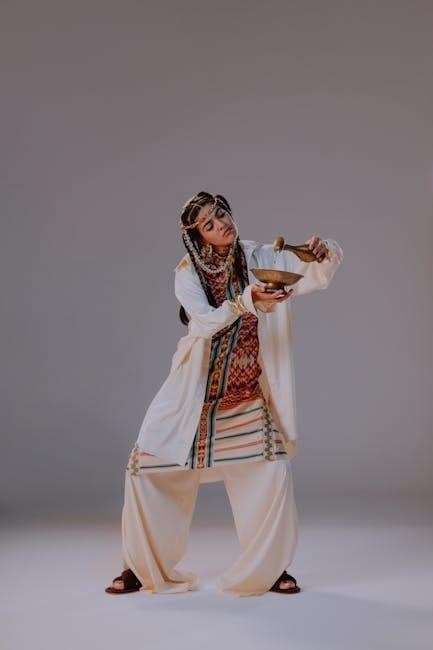Vidya Dehejia is a prominent scholar of Indian art‚ known for her transformative contributions. She has significantly advanced the understanding of India’s rich artistic heritage through her extensive research.
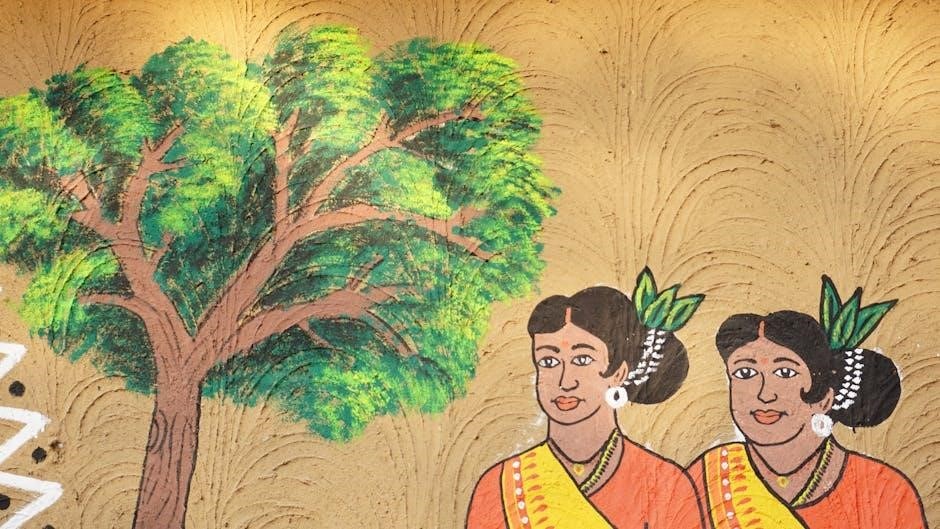
Biography and Academic Background
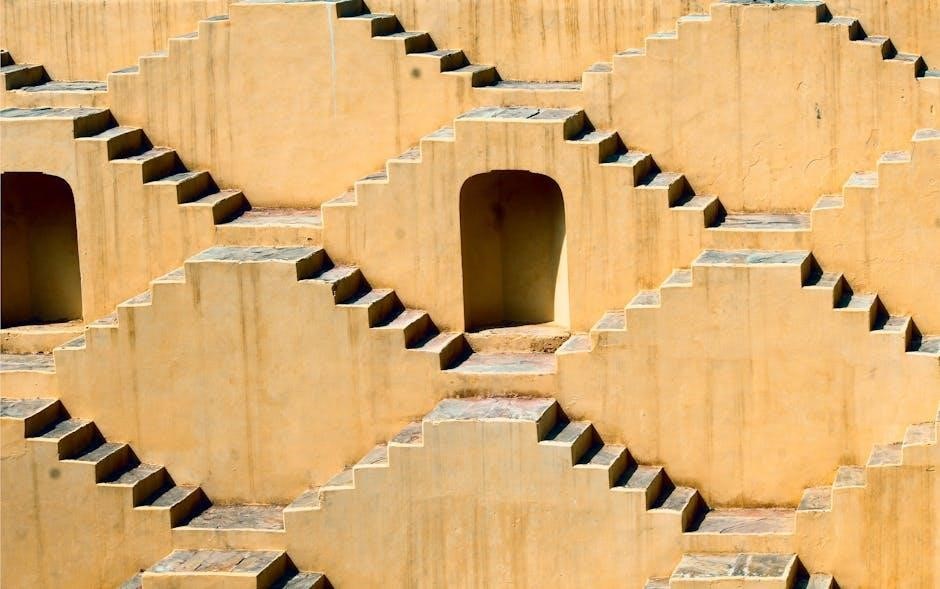
Vidya Dehejia is a distinguished scholar of Indian art and culture‚ holding the position of Barbara Stoler Miller Professor of Indian and South Asian Art at Columbia University. Born in India‚ she pursued her academic journey in both India and the UK‚ earning her Ph.D. from the University of Cambridge. Her deep understanding of classical Sanskrit and Tamil has enriched her research‚ allowing her to explore the intricate connections between text and image in Indian art. Dehejia’s academic career spans over four decades‚ during which she has taught at prestigious institutions and authored seminal works on Indian art history. Her interdisciplinary approach‚ blending art history with literature and religion‚ has set her apart as a leading authority in her field;
Key Publications and Their Impact on Indian Art Studies
Vidya Dehejia’s publications have profoundly shaped the field of Indian art studies. Her book Indian Art: Mountains‚ Rivers‚ People (1997) offers a comprehensive survey‚ tracing the evolution of Indian art from ancient to modern times. The Body Adorned: Sacred and Profane in Indian Art (2009) explores the cultural and religious significance of bodily ornamentation‚ providing fresh insights into premodern Indian aesthetics. Another seminal work‚ Discourse in Early Buddhist Art: Visual Narratives of India (1997)‚ challenges traditional interpretations of early Buddhist art‚ advocating for a multiplicity of meanings in visual narratives. Her writings are celebrated for their interdisciplinary approach‚ bridging art history‚ literature‚ and religion. These works have not only advanced scholarly understanding but also made Indian art accessible to a broader audience‚ solidifying her reputation as a leading authority in the field.
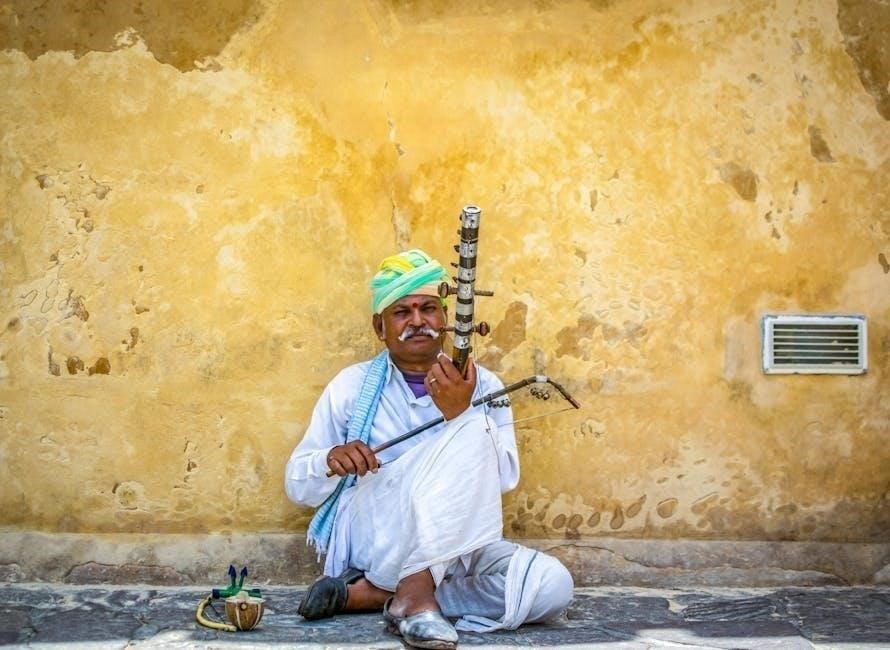
The Evolution of Indian Art: A Historical Overview
Indian art evolved from ancient Indus Valley civilizations through religious and cultural influences‚ shaped by geography‚ migrations‚ and historical rule‚ reflecting a rich‚ diverse artistic heritage.
Ancient Civilizations and the Indus Valley
The origins of Indian art trace back to ancient civilizations‚ with the Indus Valley being a cornerstone. The Indus Valley Civilization‚ flourishing around 2500 BCE‚ is renowned for its sophisticated urban planning‚ craftsmanship‚ and artistic expression. Excavations reveal intricately carved seals‚ pottery‚ and sculptures‚ showcasing early artistic techniques. These artifacts often depicted animals‚ humans‚ and symbolic motifs‚ reflecting a deep connection to nature and spirituality. The Indus Valley’s artistic legacy laid the foundation for later developments in Indian art. Its emphasis on precision and aesthetics influenced subsequent periods‚ blending functionality with symbolic meaning. This era marked the beginning of a continuous evolution in Indian art‚ setting the stage for the rich cultural and artistic diversity that followed.
Religious Influences: Hinduism‚ Buddhism‚ and Jainism
Religion has profoundly shaped Indian art‚ with Hinduism‚ Buddhism‚ and Jainism being central influences. Hindu art often portrays deities in dynamic forms‚ emphasizing cosmic and human experiences. Temple sculptures and icons reflect mythological narratives‚ while Buddhist art focuses on the life of Buddha and his teachings‚ often through symbolic representations. Jain art‚ with its emphasis on non-violence‚ depicts ascetic figures and spiritual themes. These religions have inspired iconic works‚ from the serene Buddha statues to intricate temple carvings. Vidya Dehejia’s work highlights how these faiths have woven art into their practices‚ creating a rich tapestry of spiritual and cultural expression. Her studies illustrate the enduring impact of these religions on India’s artistic heritage‚ blending devotion with aesthetic mastery. This interplay continues to influence contemporary art‚ ensuring a timeless connection to tradition.
Islamic Rule and the Mughal Era
The Islamic rule in India‚ particularly during the Mughal era‚ marked a significant transformation in Indian art. The Mughals introduced Persian influences‚ blending them with indigenous traditions to create a unique syncretic style. Emperor Akbar‚ Jahangir‚ and Shah Jahan patronized artists‚ leading to masterpieces like the Taj Mahal and intricate miniature paintings. Vidya Dehejia’s work highlights how Islamic aesthetics‚ such as arches‚ domes‚ and geometric patterns‚ merged with Hindu motifs‚ resulting in a rich cultural synthesis. This period also saw the rise of secular art‚ depicting courtly life and nature‚ alongside religious themes. Dehejia emphasizes the Mughal era’s enduring legacy‚ as it laid the foundation for India’s artistic evolution under colonial and modern influences‚ ensuring a lasting impact on the subcontinent’s creative identity. Her insights reveal the era’s role in shaping a diverse and dynamic artistic tradition.
Vidya Dehejia’s Approach to Indian Art
Vidya Dehejia’s approach to Indian art is deeply contextual and interdisciplinary. She integrates history‚ religion‚ literature‚ and cultural practices to understand artistic expressions. Her methodology emphasizes the importance of understanding art within its specific historical and cultural milieu‚ rather than isolating it as static objects. Dehejia draws on primary sources‚ including Sanskrit and Tamil texts‚ inscriptions‚ and court poetry‚ to illuminate the meanings behind sculptures‚ paintings‚ and architecture. She also explores the interplay between artistic traditions and the social dynamics of patronage‚ highlighting the roles of rulers‚ saints‚ and merchants in shaping artistic production. This holistic approach has made her work a benchmark in the field‚ offering nuanced insights into the diversity and richness of Indian art across centuries. Her scholarship continues to inspire new generations of art historians and enthusiasts alike.

Notable Works by Vidya Dehejia
Vidya Dehejia’s notable works include Indian Art: Mountains‚ Rivers‚ People‚ exploring India’s cultural landscapes‚ The Body Adorned‚ examining sacred and profane themes‚ and Discourse in Early Buddhist Art‚ analyzing visual narratives.
“Indian Art: Mountains‚ Rivers‚ People”
In Indian Art: Mountains‚ Rivers‚ People‚ Vidya Dehejia offers a comprehensive exploration of India’s artistic heritage‚ published in 1997 by Phaidon Press. This seminal work delves into the diverse cultural landscapes of India‚ examining the interplay between natural elements and artistic expression. Dehejia traces the evolution of Indian art‚ from ancient sculptures to intricate temple carvings‚ highlighting the spiritual and aesthetic significance of these creations. The book emphasizes the role of geography in shaping artistic traditions‚ illustrating how mountains‚ rivers‚ and people have inspired some of India’s most iconic works. By weaving together historical context‚ religious influences‚ and artistic techniques‚ Dehejia presents a vivid narrative that celebrates India’s rich cultural legacy. This work remains a cornerstone in the study of Indian art‚ offering insights into its profound depth and diversity.
“The Body Adorned: Sacred and Profane in Indian Art”
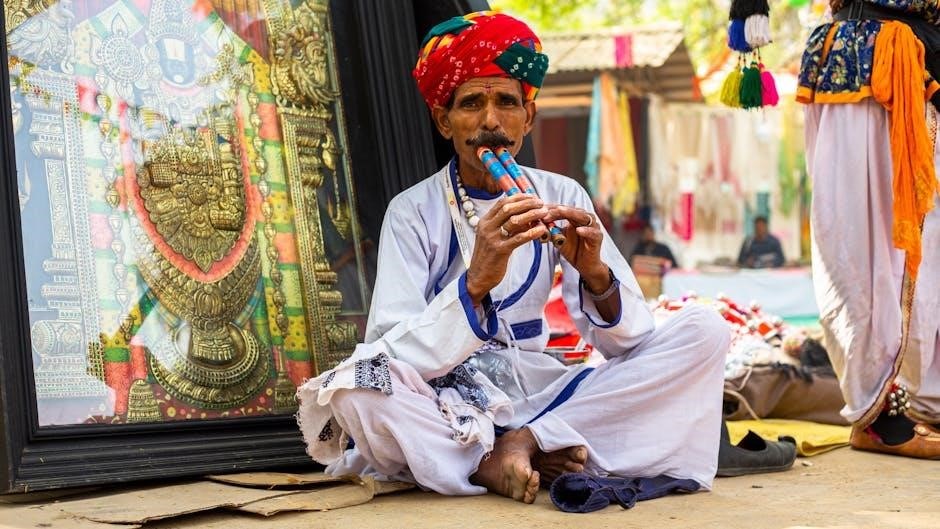
In The Body Adorned: Sacred and Profane in Indian Art‚ Vidya Dehejia delves into the dual aspects of Indian art‚ exploring both sacred and profane representations. The book examines how the human form has been depicted across various mediums‚ from temple sculptures to courtly paintings. Dehejia draws on literary sources‚ religious texts‚ and inscriptions to illuminate the cultural and historical contexts of these artworks; She challenges the Western dichotomy of sacred versus profane‚ showing how Indian art seamlessly integrates these concepts. By analyzing iconic examples‚ Dehejia reveals the intricate balance between spirituality and sensuality‚ offering a nuanced understanding of India’s artistic traditions. This work is a testament to Dehejia’s deep scholarship and her ability to interpret Indian art within its unique cultural framework.
“Discourse in Early Buddhist Art: Visual Narratives of India”
In Discourse in Early Buddhist Art: Visual Narratives of India‚ Vidya Dehejia explores the evolution of Buddhist art‚ emphasizing the transition from aniconic to iconic representations of the Buddha. She examines how early Buddhist narratives were conveyed through visual language‚ illustrating the interplay between art‚ religion‚ and culture. Dehejia highlights the role of storytelling in Buddhist art‚ demonstrating how scenes from the Buddha’s life and teachings were depicted in sculptures and paintings. Her analysis reveals the cultural and historical contexts that shaped these artistic expressions‚ offering insights into the symbolism and meaning behind early Buddhist imagery. This work is a seminal contribution to the study of Indian art‚ showcasing Dehejia’s expertise in interpreting the visual narratives of early Buddhism. Her approach bridges art history and religious studies‚ providing a deeper understanding of India’s artistic and spiritual heritage.
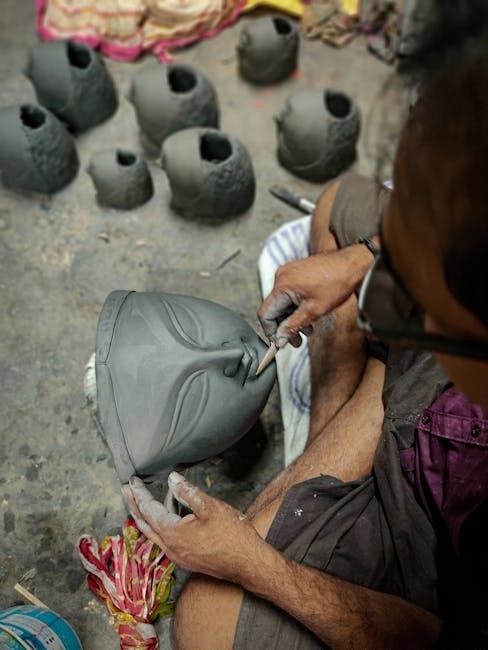
Regional and Cultural Diversity in Indian Art
Indian art reflects the rich regional and cultural diversity of the subcontinent‚ shaped by its complex history‚ geography‚ and pluralistic traditions. From the urban sophistication of the Indus Valley Civilization to the spiritual expressions of Hindu‚ Buddhist‚ and Jain art‚ each region developed unique styles. The influence of Islamic rule introduced new aesthetic sensibilities‚ blending with existing traditions to create syncretic forms. Trade and cultural exchange further enriched this diversity‚ as seen in the murals of Ajanta‚ the sculptures of Khajuraho‚ and the architecture of the Taj Mahal. Vidya Dehejia’s work highlights how regional identities‚ religious practices‚ and historical migrations have contributed to this vibrant artistic tapestry‚ offering insights into the dynamic interplay of culture and creativity across India’s vast landscape.
Awards and Recognition
Vidya Dehejia has received numerous accolades for her contributions to Indian art studies. She was awarded the Padma Bhushan‚ one of India’s highest civilian honors‚ in recognition of her scholarly work. Her research and publications have been celebrated globally‚ earning her a reputation as a leading authority in her field. Dehejia’s dedication to preserving and interpreting Indian art has also been acknowledged through various academic honors and fellowships. Her work continues to inspire new generations of scholars and art enthusiasts‚ solidifying her legacy as a pioneer in the study of Indian art and culture.
Legacy and Contemporary Relevance
Vidya Dehejia’s work has left an indelible mark on the field of Indian art studies‚ bridging the past and present. Her scholarship has inspired contemporary artists‚ curators‚ and historians‚ fostering a deeper understanding of India’s cultural heritage. Dehejia’s approach‚ which emphasizes context and cultural nuances‚ continues to influence modern interpretations of Indian art. Her books remain essential resources for students and researchers‚ ensuring her ideas remain relevant in today’s academic and artistic discourse. By connecting historical art with contemporary practices‚ Dehejia’s legacy endures‚ promoting cross-cultural dialogue and appreciation for India’s rich artistic traditions.
